Stories of the Sea: Onomichi in popular culture and multimedia
Onomichi has long been a source of inspiration for many different types of media. Today we'll be talking about a few of them that really focus in on what makes this city such a special place. We have chosen some key media in the form of films, novels, manga and video games that we think audiences the world over would be able to dive into to get a taste of Onomichi for themselves.
Originally, we posted this at the start of 2020; a time when the world as we know it was rapidly changing. During lockdown in the UK, we truly did not know when the next time was that we’d be able to visit our house again, which led us to start thinking about media that would remind us of our little ‘home from home’.
I can see the sea…The sea that I last saw, five years ago.
The nostalgia laden quote above is from a novel by renowned novelist Fumiko Hayashi, who was raised in Onomichi and eventually found acclaimed fame due to her poems and novels. A statue was erected in her honour just outside of the shotengai (shopping arcade) to honour her contributions to the city’s heritage. Her most well known work, ‘Horoki’ or The Diary of a Vagabond, is a semi-autobiographical novel that recounts her lifetime spent as a nomad all over the world, and other work by her like ‘Furui Kaze, Atarashii Kaze’, also closely references the area in a transitory, almost dreamlike fashion as she recounts lifetimes past, present and future.
Many more writers and contributors to Onomichi’s rich literary history can be discovered via the Literarture Path, a walk that spans over Onomichi’s scenic hills where its travellers can discover quotes by over 20 different authors lining the gorgeous views of the Inland Sea.
This work-in-progress fan was commissioned by Yukari from a dear friend, Ayami san. Yukari wanted to have a new specialised fan for her tea ceremony gatherings.
Ayami san is a calligrapher, in Japan called 'shoka'. Yukari asked her to put a passage from her favorite book, 'Horoki'. The blue is from the colour of Onomichi's sea.
The segment of the writing here says, 'Umi ga mieta/ Umi ga mieru/ Gonenburi ni miru Onomichi no umi wa natsukashi'. It's a little hard to find a transcription of this, but very roughly translated, it says 'I saw the sea/ I can see the sea/ This nostalgic sea that I last saw five years ago'.
The word sea ('umi') appears three times in the passage. So, Ayami san carefully highlighted the difference by using different stroke, whilst the rest of the letters were written with soft, gentle strokes to reflect Setouchi's sea.
An Onomichi Story
The famous 'Tokyo Monogatari' film, by Ozu Yasujiro, is probably the most well known film that sets its story in Onomichi. Set in 1953 postwar Japan, the film centers around the everyday lives of two elders and their children who have all grown up and lead seperate lives.
Onomichi's railways, charming homes and dockyards feature heavily in this gentle and everyday story by the famous director. Johdoji temple is central in the film, and we see its quiet surroundings feature heavily as the family struggle to be together as the children return home to Onomichi, despite having grown apart from their parents.
Ozu’s quiet and detached observations of life as it ran, paired with beautifully scenic yet strangely still shots of the landscape, allowed for Onomichi to become another character in the film.
In fact, a friend of mine from America, upon his first visit to Onomichi, stopped suddenly as we walked towards the concrete walls lining the city shore and said ‘Wait, of course! THIS is Ozu!’ as he realised where we stood was almost a shot-for-shot recreation of this famous film. What a joy to have brought him to such a landmark city!
The doctor’s son, the filmmaker’s father
Ohbayashi Nobuhiko directed a total of three films set in Onomichi. When the first film of the ‘Onomichi Trilogy’ was being recorded in the 1980s, the residents were very excited as they imagined a romantic and glitzy view of their hometown, but instead Ohbayashi focussed on the things that he felt were charming- cracked roof tiles, disused buildings and the slight dilapidation of the city. Now we would call it nostalgic and lovely, but back then the residents called on him en-masse to hide such things as it wasn't glamorous at all!
The three films comprising the Onomichi Trilogy are ‘Tenkousei’ (I Am You, You Are Me), ‘Toki wo Kakeru Shoujou (The Girl Who Leapt Through Time), and ‘Sabishinbou’ (Lonely Heart).
Ohbayashi's father was a much loved doctor in the city, and he was known as 'Doctor Ohbayashi's son', but as his fame for directing grew, the father soon became known as 'Director Ohbayashi's father'! Ohbayashi really loves Onomichi and was central in the fight against its modernisation, as he didn't want to see it sanitised like so many other towns in Japan. Thanks in part to him, we can still enjoy Onomichi for what it is today- a beautifully preserved capsule of nostalgia that will continue to diligently host many more stories of life, the universe, and everything in between.
The touching tale of a tofu shop in Onomichi
Many of the films set in Onomichi show it as it once was, but this one shows Onomichi in a more modern light.
A new independent film, 'Takano Tofuten no Haru', follows the story of a family run tofu shop in Onomichi City. The heartwarming tale of a father and daughter who live in the town, and those friends who surround them, are framed by the beautiful sights of the Setouchi sea and sky- director Mihara Mitsuhiro chose Onomichi as the location almost as an homage, in part, to Ozu's famous film 'Tokyo Story'. You can see how the seascape has changed from the era of Ozu and Ohbayashi!
Many familiar sights like the pier and shotengai are the backdrop to this heartwarming story of the awkward yet well meaning love from a father to his daughter, and vice versa. It is so wonderful to see that Onomichi continues to inspire so many stories of family and caring for loved ones. It’s certainly a city with much to give.
Perhaps Onomichi stirs up a certain sense of familiar nostalgia for many of us who may have grown up outside of the fast pace of big cities, and somehow long for a slower and simpler life to the ones that we lead now?
Found Family in Shimanami Tasogare
The manga 'Shimanami Tasogare' is set in Onomichi, too. The story centers around many LGBTQIA+ characters and their interconnecting lives, where they work on renovating old and abandoned houses into community projects. This part certainly isn't fiction, and it can be very much seen in the city as some homes have laid dormant for decades- including our own!
The story centers around a young boy who is coming to terms with his own sexuality and the difficulties of doing so in a small town where, on first look, it seems like there’s no support network. Themes like mental health, familial relationships and gender identity resonate throughout, with the serene backdrop of Onomichi providing respite and comfort for those who live there.
As their lives intertwine, they begin to free themselves from the stereotypes and negativity that others have put upon them just for being different, and are slowly able to unpack just how much such aspersions may have effected the way they view themselves and others.
Upon my first reading of the book in 2019, I didn’t even register that the story took place almost entirely on the stone steps that run parallel to our house! A recent reread opened my eyes to just how much took place near us- in fact, the little underpass that connects our home to the main streets of the city features, as does the actual logi that our house is on!
It makes me remember very fondly the tiring but refreshing walk up our stone steps to the observatory on a clear spring morning.
Comic artists, in Japan known as 'mangaka', often break up each chapter with little side annotations or character profiles.
In Shimanami Tasogare, there are little sketches with fun information about Onomichi by the author and artist, Kamatani Yuhki. They have included places like Senkoji and the famous 'cat alley', amongst many other familiar sights like the winding stone steps and sweeping bridges that span over the inland sea. There’s also a pivotal scene that takes place halfway through the Shimanami Kaido cycle trail.
Also featured heavily are Onomichi food staples such as ramen, okonomiyaki and hassaku citrus soft serve ice cream. It is certainly a manga that requires a full stomach to read, as the illustrations are so beautiful that you feel hungry just looking at the food!
We have our own little guide to Onomichi’s foodie hotspots in the form of our Google Maps- it also features many of the places that are in the comic, so we hope both fans and newcomers to the manga will enjoy it!
Ono Michio- the surprisingly familiar mascot of Yakuza: Like a Dragon
Another franchise that has become very popular in Europe and the USA is the series 'Ryu Ga Gotoku', or as it's known in the west, 'Yakuza: Like a Dragon'. The 6th installment of the game takes place partly within Onomichi, and we find the central character Kiryu Kazuma having to go undercover as local regional mascot 'Ono Michio', a hassaku orange with a bowl of Onomichi Ramen on his head, to solve a high-stakes mission to find a missing person. The storyline may be dark and gritty, but we can't help but be charmed by Ono Michio's unassuming face!
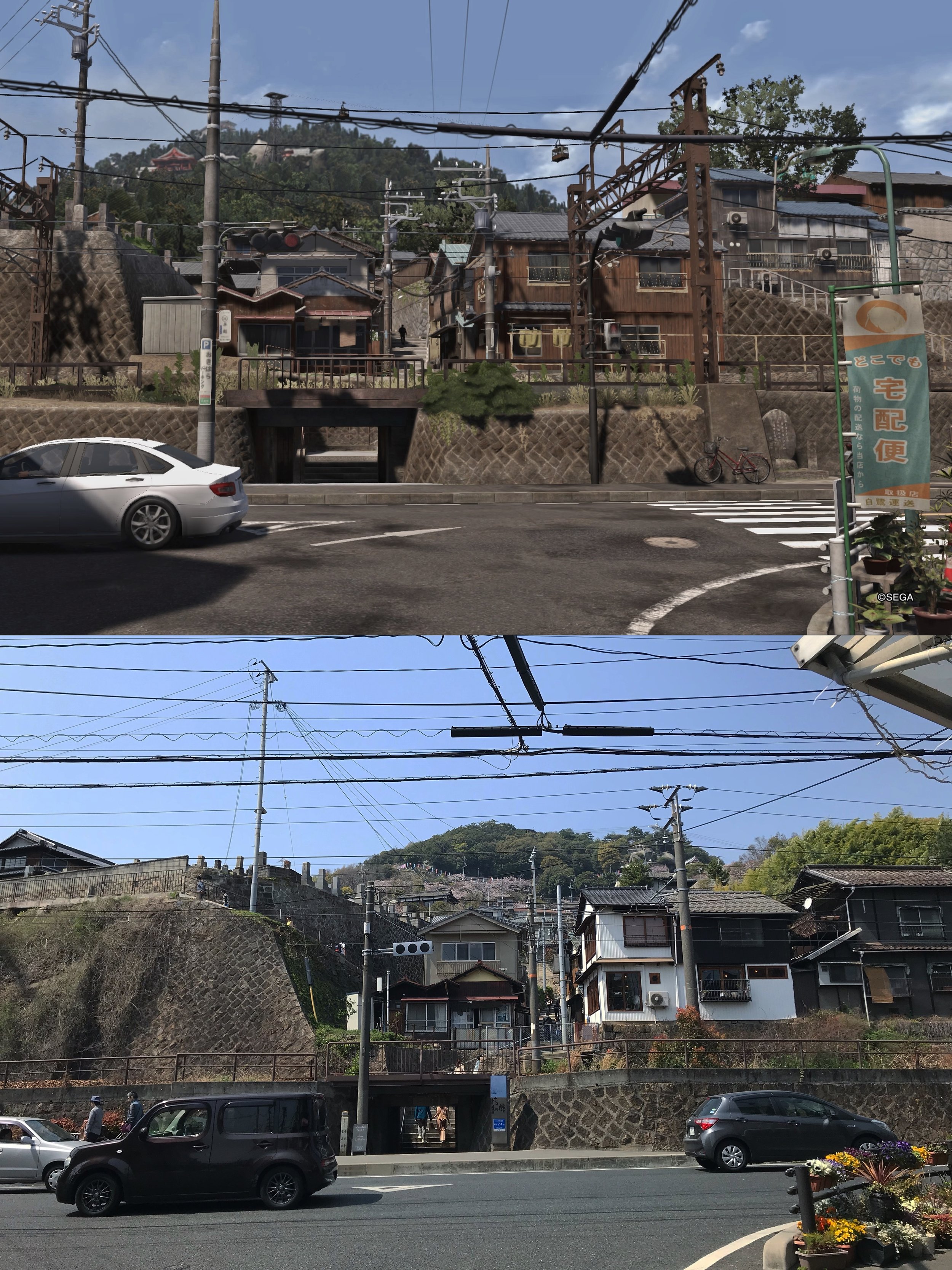

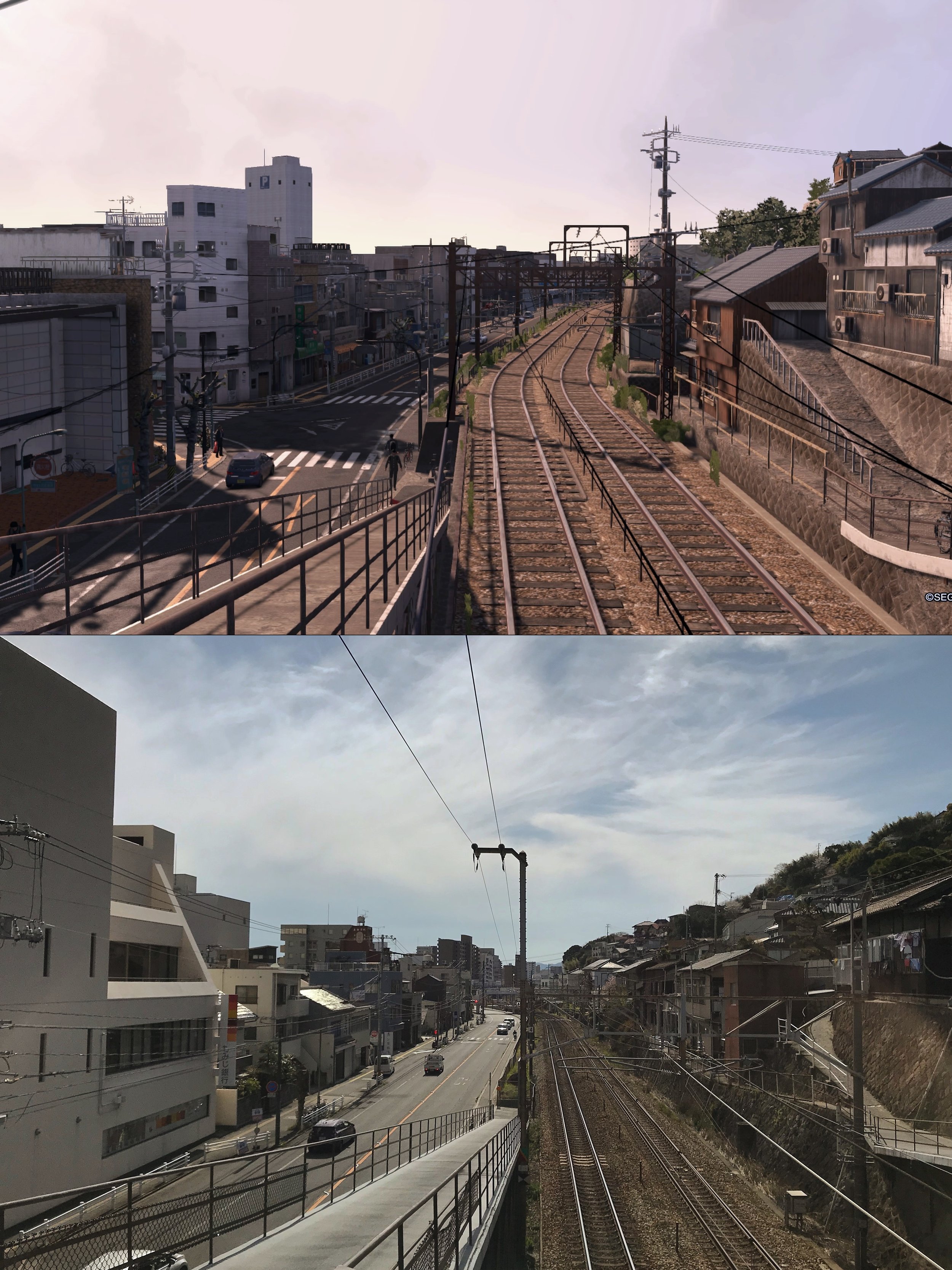
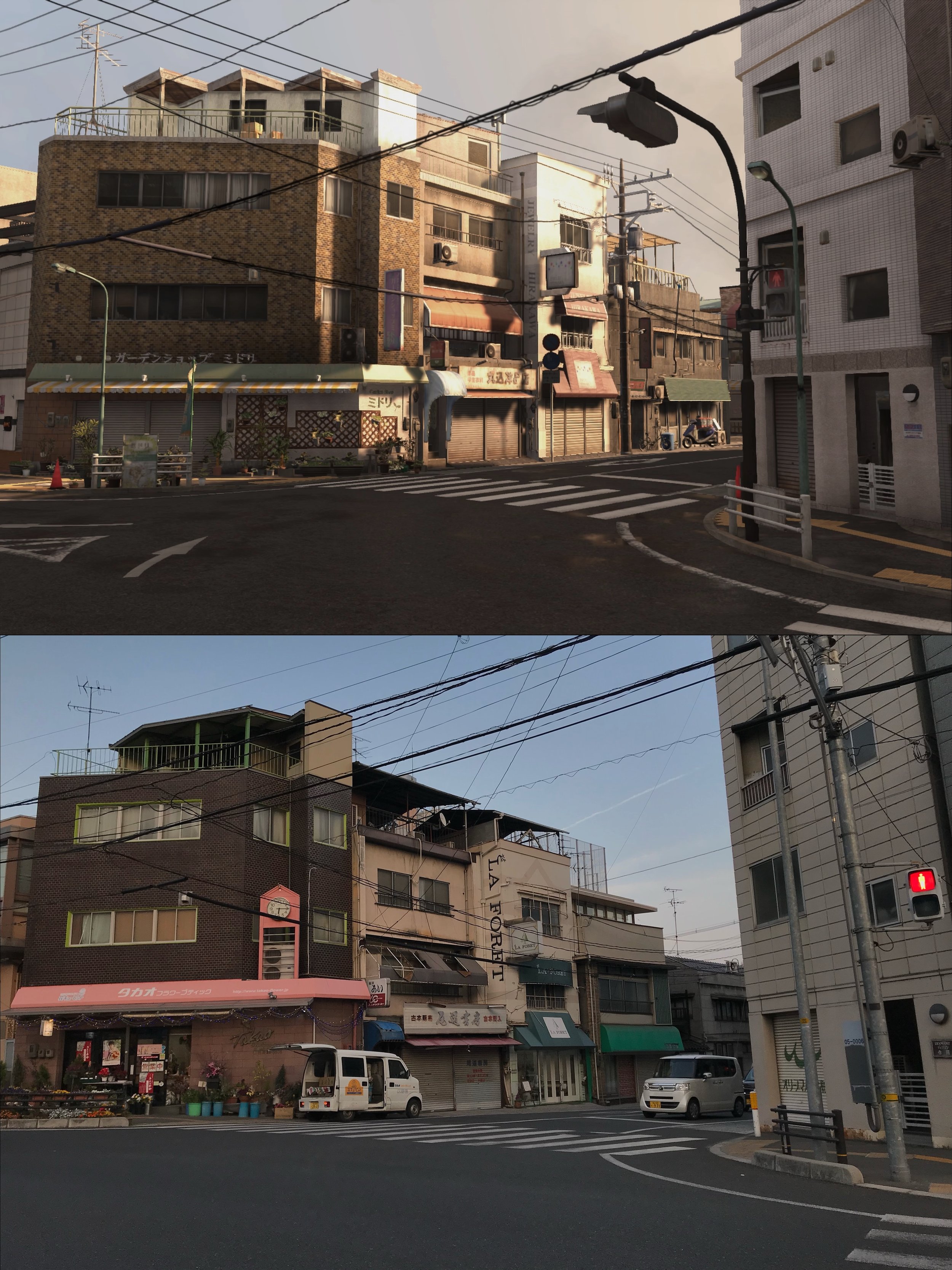
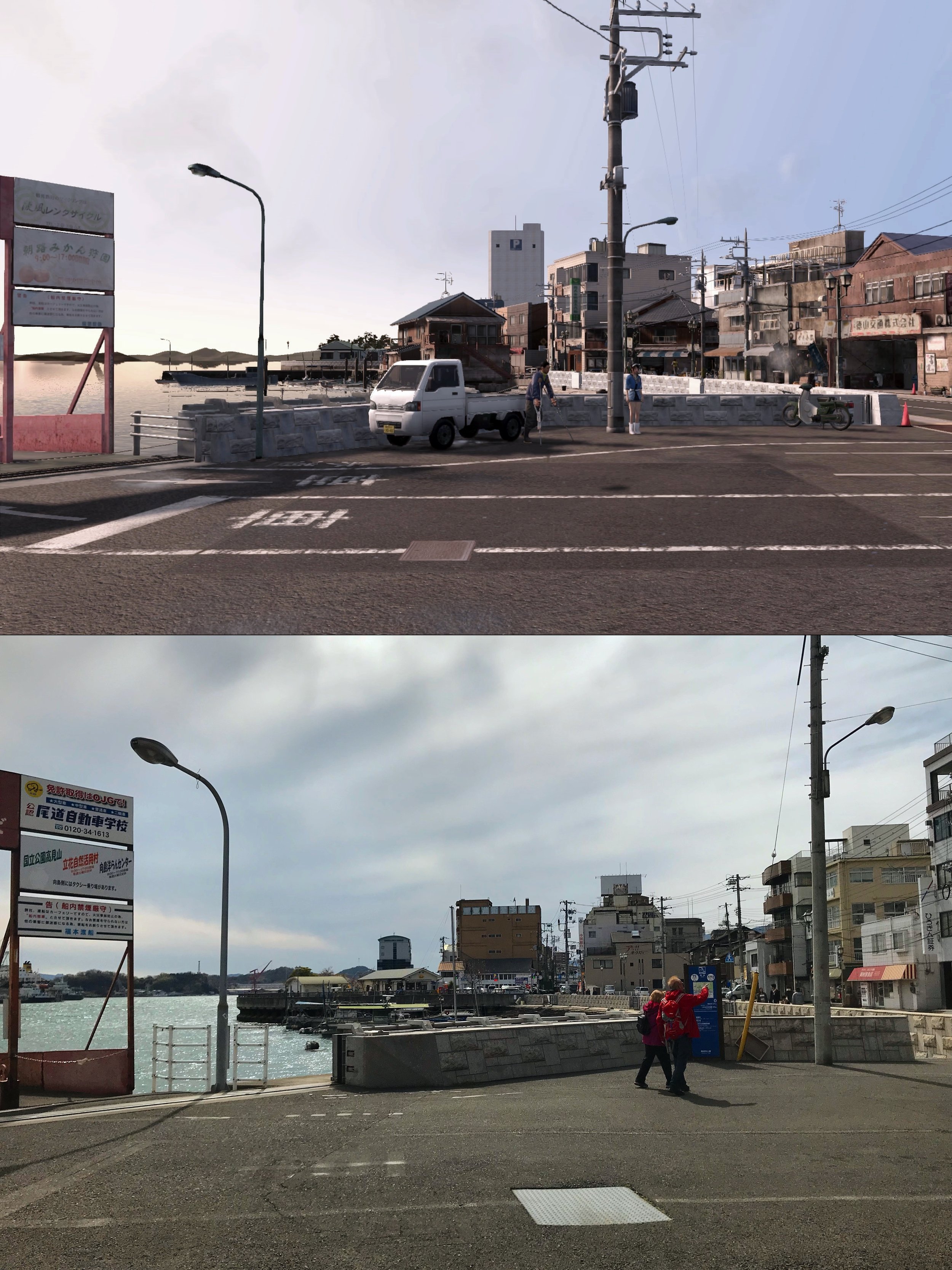


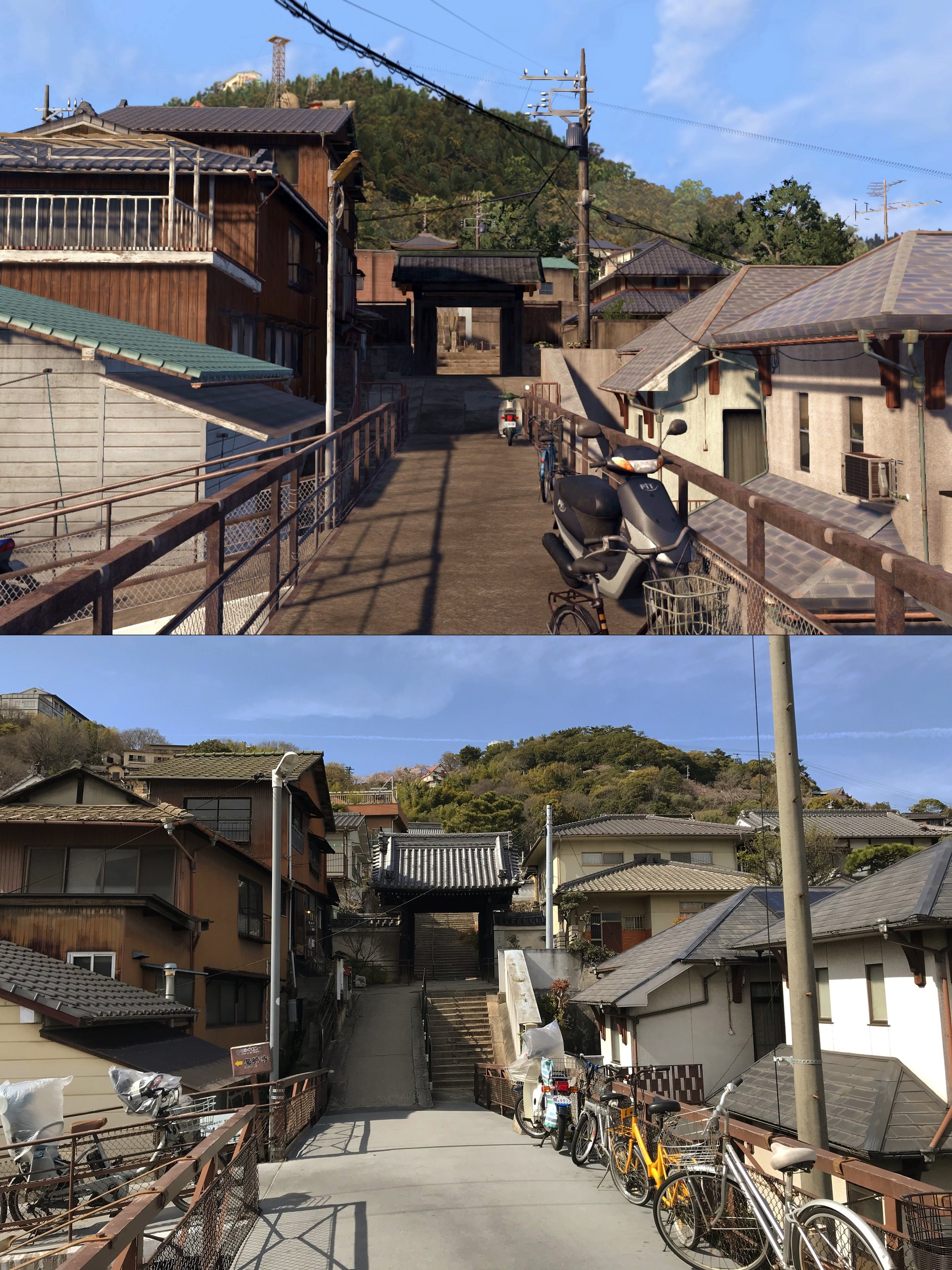
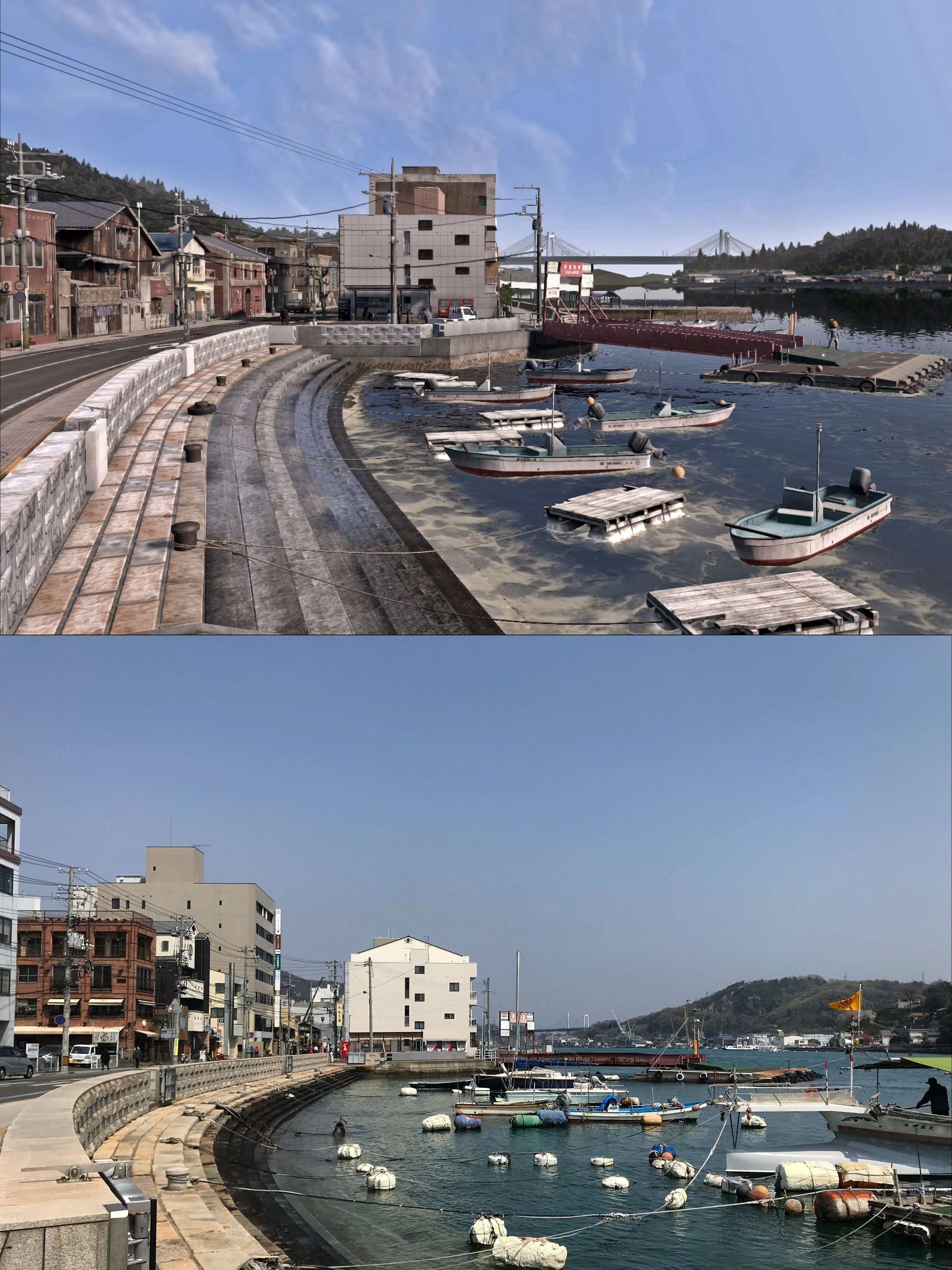
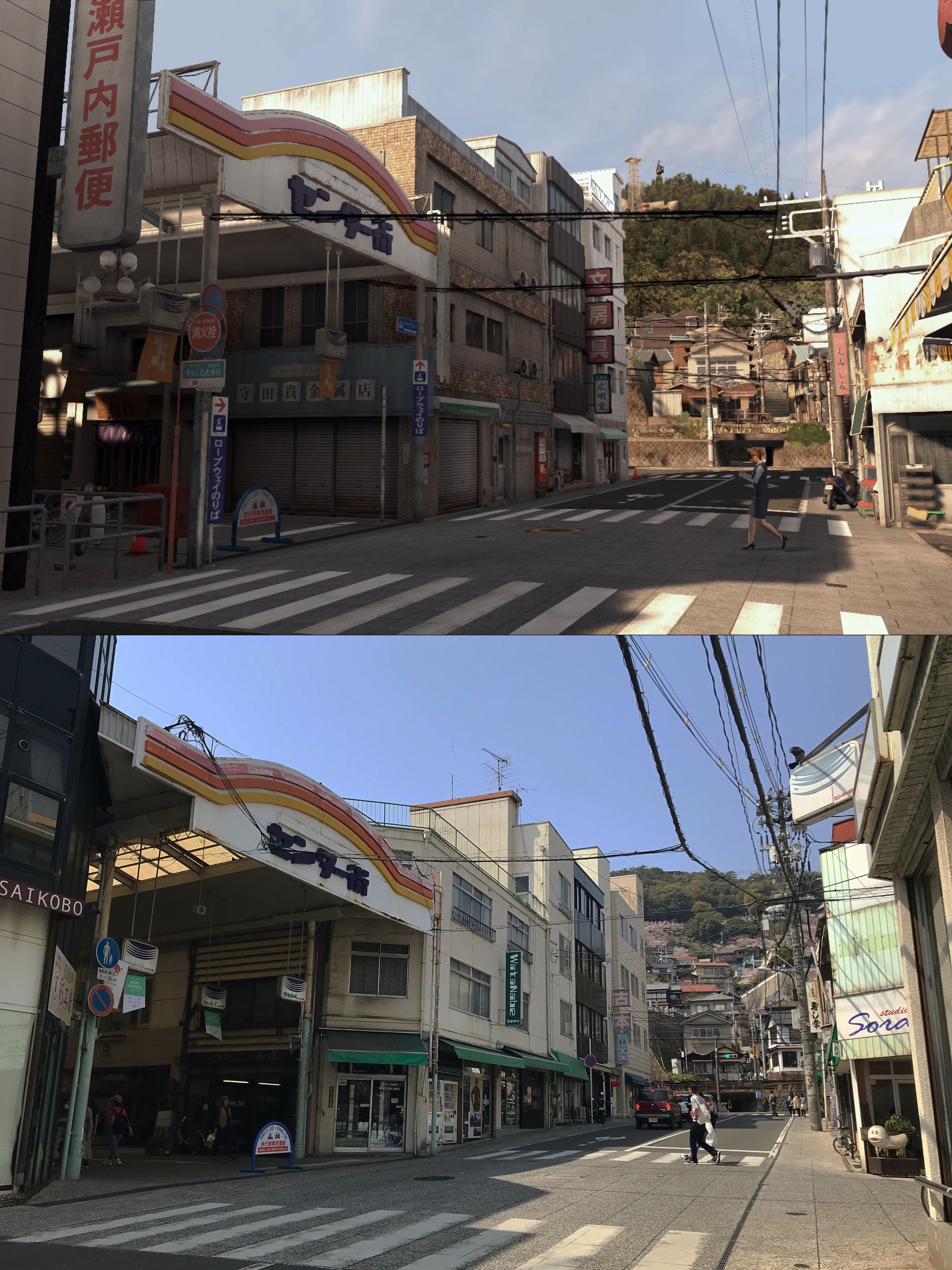
There have been many blogs where fans have visited the town centre to recreate the screenshots from the game! It's amazing how closley the developers of the game have captured the feel of Onomichi's arcade, side streets and shrines. Take a look through the gallery above to see some side-by-side comparisons. They have even recreated the ropeway, train station and shop interiors- if you look closely in the game, you can even see the street that leads up to ALCOVE!
Further reading and media contained
Below are links to the media mentioned in the blog, to read at your leisure.
Hayashi Fumiko- Horoki (The Diary of a Vagabond)
Ozu Yasujiro- Tokyo Monogatari (Tokyo Story)
Ohbayashi Nobuhiko- Onomichi Sanbusaku (Onomichi Trilogy films)
Mihara Mitsuhiro- Takano Tofuten no Haru (Takano Tofu)
Kamatani Yuki- Shimanami Tasogare (Our Dreams at Dusk)
Ryu Ga Gotoku 6: Inochi no Uta (Yakuza 6: The Song of Life)
It’s so fascinating to see how much cultural impact Onomichi has had on the world. We hope that you also are able to visit this fascinating city and explore for yourselves the multitudes that it contains! If you’d like to explore Onomichi and are looking for advice or recommendations on where to stay, you can always contact us to find out more.
NB: This is an updated expansion of our Facebook post dated 13th March 2020; the original can be found here.












